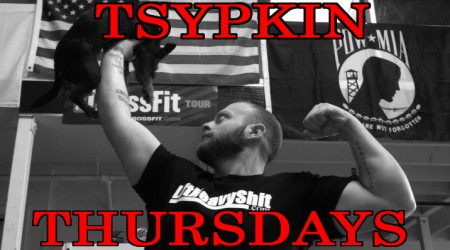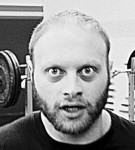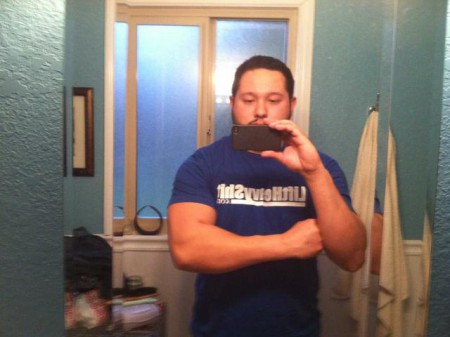It’s Friday! This week on the site Paul Sousa reviewed a new android app called deep squatter. On Tuesday we had SOF Olpainless reflect on his experiences with training while deployed, and then on Thursday Darth Tsypkin answered more of your questions

I googled “brent kim” and this is what I got.
Going forward, Mike Battaglino will be answering reader submitted questions on topics such as Powerlifting, Strongman, Military related training, declining spots, etc. in a video format. Questions can be submitted to mike@70sbig.com or posted in the comments on facebook. Mike answered a few questions already, posted on our facebook page this week:
Michael asks: I’m a Marine and I love powerlifting (just competed in my first meet) but I need to temporarily focus on dropping my 3 mile run time for a PFT. What are your suggestions for strength maintenance while I start running long enough to do well on the fitness test? I’m planning on throwing together a mix of interval/tempo work and the occasional longer run (2-3 miles). Probably 3-4 days a week of running. I’m sure this is a pretty common scenario for the military folk.
Mike: I’m quite glad my PT test days are over. I would reccomend trying to maintain your current program the best that you can, and just keep the weights the same for 4-6 weeks. If you need to, drop some of the accessory lifts. You shouldn’t lose a tremendous amount of strength, and you can be back to adding weight 1-2 weeks after the test.
I wouldn’t worry about moving the weights up for either your volume or intensity days. Perhaps for your bench and press you can move up slowly, but I would just worry about passing the test, and maintaining your current numbers.
Kyp asks: I recently bought a yoke and it’s supposed to be arriving sometime this week so figure I would study up on it in the mean time. I was wondering if you would be able to share any knowledge/know of any particularly good sources or information regarding programming yoke walks for somebody trying to get 70’s big, and have a good base of general conditioning?
Mike: Kyp, I have read a quite a few pro strongman training logs, and everyone seems to program it a bit differently. I’ve only had my yoke for about six months, but I would recommend keeping it light for a little while. If you could manage to do it once a week, you would probably develop your technique pretty quickly, but keep it relatively light. Once it starts to get heavy, do it every other week. If you’re going into a contest where you’re going to use the yoke, consider programming speed/heavy days with it. I think the most important thing is to develop skill walking with it. Watch videos of pro strongman using it and experiment with what works for you (particularly hand placement).
LW Pro Strongman Andy Deck with a 1010lb yoke
As today is PR Friday, let us know how you are doing in the comments. What do you want to talk about? Add videos by just posting the youtube URL. Since it’s snowing here in Boston, crockpot recipes will be awarded extra internet points today, along with the admiration of your peers.




 Paul Sousa is an amateur strongman enthusiast, general strength enthusiast, Android app enthusiast, husband, father, and is enthusiastic about burritos and hilariously oversized steaks.
Paul Sousa is an amateur strongman enthusiast, general strength enthusiast, Android app enthusiast, husband, father, and is enthusiastic about burritos and hilariously oversized steaks. 
